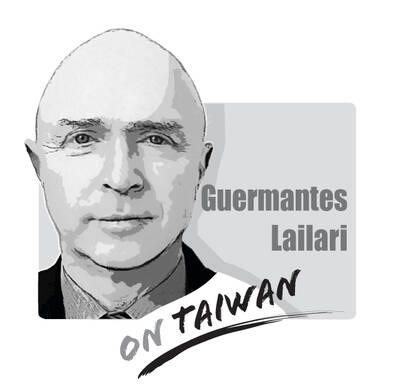In order to meet public expectations, the Executive Yuan has announced a Cabinet reshuffle involving the change of 16 officials, declaring the official launch of the new “Artificial Intelligence Action Cabinet 2.0.”
As a civil servant, I understand deeply that the government must first address public grievances in order for citizens to truly feel its impact. In 2019, just half a month after then-premier Su Tseng-chang (蘇貞昌) assumed office, he actively sought to understand the public’s hardships and concerns, identified problems, investigated the sources of dissatisfaction, monitored public opinion and quickly dispelled rumors. He held a series of meetings with party legislators to gather public feedback and implemented a number of down-to-earth reforms aimed at solving inconveniences citizens experienced as a result of organizational and bureaucratic inefficiencies.
One such reform addressed the requirement for citizens to show ID when withdrawing more than NT$30,000 from the bank — the regulation was adjusted in January 2019 to allow “regular customers” to withdraw up to NT$500,000 without needing to present identification. This effectively eliminated the obstacles commonly faced by small and medium-sized business owners when accessing cash.
At that time, as the African swine fever outbreak in China was spreading rapidly, the Executive Yuan mandated the procurement of X-ray machines at airports to thoroughly inspect luggage being brought in by incoming travelers. This measure effectively prevented pork products from affected areas from entering Taiwan, thereby averting a potential collapse of the nation’s pig farming industry.
These are concrete examples of how the public sector can properly exercise administrative power to achieve tangible results that are felt by the public.
The Executive Yuan should issue a directive to all ministries and agencies requiring them to submit reports on current administrative measures that the public finds inconvenient, as well as any matters related to livelihood reforms. The authorities should be tasked with devising solutions to these issues within a set timeframe. Meanwhile, the National Development Council should strictly monitor and manage the progress and timeline of these efforts to ensure the public feels a tangible impact.
Furthermore, ministries and agencies should recruit creative talent with strong policy communication skills to strengthen media outreach and manage public discourse — this is especially true when it comes to addressing misinformation on social media, as agencies should abandon overly formal or official language in favor of clear, accessible language that the public can easily understand. By presenting concise and persuasive statements or infographics, they could take control of the narrative, prevent national policies from being misunderstood or distorted and enter a new era of governance.
Yeh Yu-cheng is a civil servant.
Translated by Kyra Gustavsen

Chinese state-owned companies COSCO Shipping Corporation and China Merchants have a 30 percent stake in Kaohsiung Port’s Kao Ming Container Terminal (Terminal No. 6) and COSCO leases Berths 65 and 66. It is extremely dangerous to allow Chinese companies or state-owned companies to operate critical infrastructure. Deterrence theorists are familiar with the concepts of deterrence “by punishment” and “by denial.” Deterrence by punishment threatens an aggressor with prohibitive costs (like retaliation or sanctions) that outweigh the benefits of their action, while deterrence by denial aims to make an attack so difficult that it becomes pointless. Elbridge Colby, currently serving as the Under
The Ministry of the Interior on Thursday last week said it ordered Internet service providers to block access to Chinese social media platform Xiaohongshu (小紅書, also known as RedNote in English) for a year, citing security risks and more than 1,700 alleged fraud cases on the platform since last year. The order took effect immediately, abruptly affecting more than 3 million users in Taiwan, and sparked discussions among politicians, online influencers and the public. The platform is often described as China’s version of Instagram or Pinterest, combining visual social media with e-commerce, and its users are predominantly young urban women,
Most Hong Kongers ignored the elections for its Legislative Council (LegCo) in 2021 and did so once again on Sunday. Unlike in 2021, moderate democrats who pledged their allegiance to Beijing were absent from the ballots this year. The electoral system overhaul is apparent revenge by Beijing for the democracy movement. On Sunday, the Hong Kong “patriots-only” election of the LegCo had a record-low turnout in the five geographical constituencies, with only 1.3 million people casting their ballots on the only seats that most Hong Kongers are eligible to vote for. Blank and invalid votes were up 50 percent from the previous
Alarm bells over a “hollowing out” of Taiwan’s semiconductor industry and US demands for “protection money” have fueled a panic over Taiwan. To understand how misplaced these fears are, consider the movements of global technology giants. Nvidia Corp CEO Jensen Huang (黃仁勳), Advanced Micro Devices Inc (AMD) CEO Lisa Su (蘇姿丰) and Taiwan Semiconductor Manufacturing Co (TSMC) chairman C.C. Wei (魏哲家) could undoubtedly understand the situation best, and they continue to make key investments in Taiwan. They do not make decisions on a whim. They are the architects of global computing power strategy and possess the highest levels of industry knowledge. No